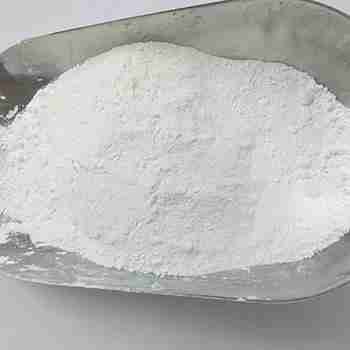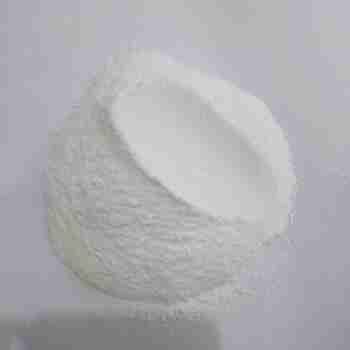Stearalkonium Chloride CAS 122-19-0
Chemical?Name:?Stearalkonium Chloride
CAS?No.: 122-19-0
MF: C27H50ClN
MW: 424.15
Appearance: White or light yellow solid
发送询盘
Description
Stearalkonium Chloride Quick?Details
Chemical?Name:?Stearalkonium Chloride
Synonyms: Stearyldimethylbenzylammonium chloride; Benzyldimethyl(octadecyl)ammonium chloride; N-Benzyl-N,N-dimethyloctadecan-1-aminium chloride
CAS?No.: 122-19-0
MF: C27H50ClN
MW: 424.15
Molecular Structure:
Appearance: White or light yellow solid/Light yellow to colorless liquid
Assay??50??2%
Stearalkonium Chloride Characteristics
White or light yellow solid with a slightly pungent odor and is easily soluble in water. After dissolving, it becomes a viscous liquid, soluble in isopropyl alcohol, ethanol and aqueous solutions. Resistant to acid, hard water, and inorganic salts, but not alkali. Reacts with strong bases to form quaternary ammonium bases (strong bases). It has excellent wettability, resistance, bactericidal properties, and soft conditioning properties. It is a quaternary ammonium salt type cationic surfactant.
This product is mainly used as thickener of grease, pharmaceutical bactericide, textile wetting agent, softener and antistatic agent. Has good stability.
Stearalkonium Chloride Specifications
Item
Standard
Appearance(25??)
White or light yellow solid
Active content % (Wt)
50??1
Free amine content?%
??1.0
Amine salt content?%
??3.0
PH value (5% aqueous solution)
6.0-9.0
Item
Specifications
Appearance
Light yellow to colorless liquid
Active content %
50??2
Free amine %
??1
PH (1% aqueous solution)
4-8
Solvent
Alcohol+water
??50%
Amine hydrochloride
??1%
Stearalkonium Chloride Applications
???Fungicides: pharmaceutical fungicides, industrial circulating water fungicides, and oil field fungicides.
???Textile dyeing auxiliaries: wetting agents, finishing agents, softeners, fiber antistatic agents.
???Modifier: organic bentonite modifier.
???Oilfield additives: grease thickener.
?? Activator: Desulfurization activator for petroleum refineries.
Packaging?and?Shipping
Packing: 50kg/drum; 180kg/drum; 200kg/drum
Storage
Store in tightly closed original container, protected from light, in a dry, cool?and well-ventilated place.
| 5 |
|
0 |
| 4 |
|
0 |
| 3 |
|
0 |
| 2 |
|
0 |
| 1 |
|
0 |
- 2
- 2-diallylpent-4-en-1-amine
- 4
- 95-16-9
- Ammonium sulfamate
- Benzothiazole
- cas:67889-00-3ح2
- cas:83524-75-8 | pigment black 32
- cas:928836-00-4 | 2
- cas:932745-70-5 | 4
- Chemical Minerals
- Coconut diethanolamide
- Daily Chemicals
- discount
- for sale
- General pvc resin
- hexyl D-glucoside
- in stock
- Lauramidopropyl betaine
- LAURIC ACID MONOETHANOLAMIDE
- Petroleum Additives
- Plasticiser
- Ploymers
- price
- PVC
- quotation
- Raw Materal
- Remove term: Petroleum Additives Petroleum Additive
- SODIUM ETHYL 2-SULFOLAURATE
Related Products
Chemical Name: UV-120
Other Name: (2’,4’-Di-tert-butylphenyl 3,5-di-tert-butyl-4-hydroxybenzoate)
CAS No.: 4221-80-1
Molecular Fomula: C29H42O3
Molecular weight: 438.66
Assay: ≥99%(LC)
Lauryl Glucoside is an eco-conscious non-ionic surfactant, derived from sustainable lauric acid and glucose. It offers superior mildness and biodegradability, making it an ideal choice for formulating gentle and effective cleaning agents in personal care and household products. Its bio-based nature aligns with the growing demand for green chemistry solutions.
Coconut Oil Monoethanolamide is a high-performance emulsifier derived from natural coconut oil. It is a key component in personal care and cosmetic formulations, providing excellent emulsifying properties and improving product texture. With its natural origin and superior performance, it is the preferred choice for creating stable and high-quality products.
Chemical Name: o-Xylene
Synonyms: 1,2-Dimethylbenzene; ortho-xylene
CAS No.: 95-47-6
Molecular Formula: C8H10
Molecular Weight: 106.17
Decyl glucoside, scientifically known as ??-D-Glucopyranoside, is a non-ionic surfactant derived from renewable resources, such as glucose and fatty alcohols. It is a biodegradable and mild alternative to traditional surfactants, making it a preferred choice for eco-friendly and sensitive skin formulations.
This compound is characterized by its ability to form stable emulsions and foams, which are essential properties in a variety of applications, including personal care products and household cleaning agents. Decyl glucoside is valued for its low irritation potential and excellent skin compatibility, making it suitable for use in baby care and cosmetic products.
Chemically, decyl glucoside features a hydrophilic head and a hydrophobic tail, allowing it to effectively reduce surface tension and solubilize oils in water. Its mildness and biodegradability contribute to its use in formulations that require gentle cleansing without compromising the integrity of the skin’s natural barrier.
In summary, decyl glucoside is a versatile and sustainable surfactant that offers a balance of performance and safety. Its eco-friendly profile and compatibility with sensitive skin types make it an ideal ingredient for a wide range of personal care and cleaning products.
Lauramidopropyl betaine is a mild, biodegradable surfactant commonly used in personal care products and cleaning formulations. It is derived from coconut oil and is known for its foaming and wetting properties, making it ideal for creating rich lathers. This ingredient is particularly favored for its gentleness on the skin and its ability to cleanse without causing irritation, making it suitable for sensitive skin types. It also contributes to the product’s viscosity and stability.
Chemical Name: STODDARD SOLVENT
CAS No.: 64742-88-7
Appearance: Colorless or Light Yellow Liquid
Chemical Name: Zinc citrate
Synonyms: Zinc citrate trihydrate
CAS No.: 546-46-3
Molecular Formula: C6H8O7Zn
Molecular Weight: 257.5
Appearance: White powder
Common English name: 5-iodo-2,3-dihydropyridazin-3-one
CAS No.: 825633-94-1
Molecular formula: C4H3IN2O
Molecular weight: 221.98
Sample: Available
Chemical Name: Quercetin-3-O-sophoroside
CAS No.: 18609-17-1
Molecular Formula: C27H30O17
Molecular Weight: 626.52
Decyl Glucoside is an eco-friendly, non-ionic surfactant derived from renewable resources. Renowned for its mildness and biodegradability, it is ideal for creating gentle, high-performing cleaning agents in personal care and household products. Its sustainable and effective nature makes it a preferred choice for green formulations.
Sodium Ethyl 2-Sulfolaurate is a surfactant with a unique combination of properties. It is an anionic compound, derived from the sulfonation of ethyl laurate, which is then neutralized with sodium hydroxide. This results in a product that is highly effective in lowering the surface tension of water, making it an excellent wetting agent and emulsifier. It is commonly used in personal care products, detergents, and industrial applications for its foaming and dispersing capabilities. As a mild and biodegradable ingredient, it is favored for its environmental and skin-friendly attributes, ensuring safety and performance in a variety of formulations.

















Reviews
There are no reviews yet.